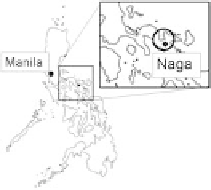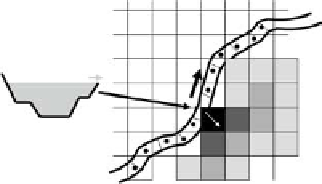Geoscience Reference
In-Depth Information
Fig. 1.
Location of the study area.
Fig. 2.
Coupled 1D-2D modeling.
characteristics
1
:
•
The continuity equation is approximated such that (a) mass is conserved
not only globally but also locally and (b) the total water depth is guar-
anteed to be always positive which excludes the necessity of “flooding
and drying” procedures.
•
The momentum equation is approximated such that a proper momentum
balance is fulfilled near large gradients.
The combination of positive water depths and mass conservation assures a
stable numerical solution that converges thanks to the momentum balance.
The numerical schemes, described in depth by Hesselink
et al.
,
1
are tuned
for speed, needed to assess every thinkable flooding scenario.
2
Both the
progressive wave phase and the basin filling can be described accurately so
that SOBEK can tackle flow over initially dry land and flow phenomena
occurring shortly after a dike break. Since SOBEK computes on a rectan-
gular grid and geometrical input data can be specified in a number of ways,
land layout features, as dikes, roads, railroads, waterways, viaducts, etc.
can easily be included in the analysis. The user can force dike failures so
that “what if” scenarios can be investigated. A more elaborate explanation
of this coupled dynamic hydraulic is given, e.g. in Refs. 1-3.










